The Efficacy of Additives for the Mitigation of Aflatoxins in Animal Feed: A Systematic Review and Network Meta-Analysis
Abstract
1. Introduction
2. Results
2.1. Search Results
2.2. Characteristics of the Included Studies
2.3. Study Classification
2.4. Meta-Analysis Results
Effect of Aflatoxins on Serum Alanine Transaminase
2.5. Efficacy of Feed Additives to Mitigate Aflatoxins
3. Discussion
4. Conclusions
5. Materials and Methods
5.1. Search Strategy and Eligibility Criteria
5.2. Study Selection Process and Screening
5.3. Data Extraction and Assessment of Risk of Bias
5.4. Data Analysis
Supplementary Materials
Author Contributions
Funding
Institutional Review Board Statement
Informed Consent Statement
Data Availability Statement
Acknowledgments
Conflicts of Interest
References
- Godet, M.; Munaut, F. Molecular strategy for identification in Aspergillus section Flavi. FEMS Microbiol. Lett. 2010, 304, 157–168. [Google Scholar] [CrossRef]
- Shabeer, S.; Asad, S.; Jamal, A.; Ali, A. Aflatoxin Contamination, Its Impact and Management Strategies: An Updated Review. Toxins 2022, 14, 307. [Google Scholar] [CrossRef] [PubMed]
- Benkerroum, N. Aflatoxins: Producing-Molds, Structure, Health Issues and Incidence in Southeast Asian and Sub-Saharan African Countries. Int. J. Environ. Res. Public Health 2020, 17, 1215. [Google Scholar] [CrossRef] [PubMed]
- Xie, K.; He, X.; Hu, G.; Zhang, H.; Chen, Y.; Hou, D.; Song, Z. The preventive effect and mechanisms of adsorbent supplementation in low concentration aflatoxin B1 contaminated diet on subclinical symptom and histological lesions of broilers. Poult. Sci. 2022, 101, 101634. [Google Scholar] [CrossRef]
- Allameh, A.; Khanian, M.; Karimi-Torshizi, M.; Kalantari-Hesari, A. Hepatoprotective effects of Lactobacillus plantarum 299v supplemented via drinking water against aflatoxin-induced liver damage. Avian Pathol. 2021, 50, 522–530. [Google Scholar] [CrossRef]
- Gallo, A.; Giuberti, G.; Frisvad, J.; Bertuzzi, T.; Nielsen, K. Review on Mycotoxin Issues in Ruminants: Occurrence in Forages, Effects of Mycotoxin Ingestion on Health Status and Animal Performance and Practical Strategies to Counteract Their Negative Effects. Toxins 2015, 7, 3057–3111. [Google Scholar] [CrossRef] [PubMed]
- Barati, M.; Chamani, M.; Mousavi, S.; Hoseini, S.; Ebrahimi, M. Broiler Tavuklarda Aflatoksin ile Kontamine Diyette Ticari Toksin Bağlayıcı, Doğal Probiyotik Türleri, Maya Hücre Duvarı ve Aluminosilikatın GOT2 ve CYP450 1A5 Gen Ekspresyonları İle Karaciğer Enzimlerinin Serum Konsantrasyonları Üzerine Etkisi. Kafkas Univ. Vet. Fak. Derg. 2017, 23, 45–67. [Google Scholar]
- Cao, J.; Wang, W. Effects of astaxanthin and esterified glucomannan on hematological and serum parameters, and liver pathological changes in broilers fed aflatoxin-B1-contaminated feed. Anim. Sci. J. 2013, 85, 150–157. [Google Scholar] [CrossRef] [PubMed]
- Britzi, M.; Friedman, S.; Miron, J.; Solomon, R.; Cuneah, O.; Shimshoni, J.; Soback, S.; Ashkenazi, R.; Armer, S.; Shlosberg, A. Carry-Over of Aflatoxin B1 to Aflatoxin M1 in High Yielding Israeli Cows in Mid- and Late-Lactation. Toxins 2013, 5, 173–183. [Google Scholar] [CrossRef]
- Costamagna, D.; Gaggiotti, M.; Chiericatti, C.; Costabel, L.; Audero, G.; Taverna, M.; Signorini, M. Quantification of aflatoxin M1 carry-over rate from feed to soft cheese. Toxicol. Rep. 2019, 6, 782–787. [Google Scholar] [CrossRef]
- Gruber-Dorninger, C.; Jenkins, T.; Schatzmayr, G. Global Mycotoxin Occurrence in Feed: A Ten-Year Survey. Toxins 2019, 11, 375. [Google Scholar] [CrossRef] [PubMed]
- Rodrigues, I.; Handl, J.; Binder, E. Mycotoxin occurrence in commodities, feeds and feed ingredients sourced in the Middle East and Africa. Food Addit. Contam. Part B 2011, 4, 168–179. [Google Scholar] [CrossRef] [PubMed]
- Ochieng, P.; Scippo, M.; Kemboi, D.; Croubels, S.; Okoth, S.; Kang’ethe, E.; Doupovec, B.; Gathumbi, J.; Lindahl, J.; Antonissen, G. Mycotoxins in Poultry Feed and Feed Ingredients from Sub-Saharan Africa and Their Impact on the Production of Broiler and Layer Chickens: A Review. Toxins 2021, 13, 633. [Google Scholar] [CrossRef] [PubMed]
- AUC-PACA; CTA. Engaging the Private Sector for Aflatoxin Control in Africa; Concept note; Technical Centre for Agricultural and Rural Cooperation ACP-EU (CTA) in conjunction with the Partnership for Aflatoxin Control in Africa (PACA): Entebbe, Uganda, 2016; Available online: http://www.cta.int/images/PACA_CTA_Concept Note_Engaging the Private Sector for Aflatoxin Controlv2_JAF CTA_080916.pdf (accessed on 30 June 2022).
- Lubulwa, A.S.G.; Davis, J.S. Estimating the social costs of the impacts of fungi and aflatoxins in maize and peanuts. In Stored Product Protection, Proceedings of the 6th International Working Conference on Stored-Product Protection, Canberra, Australia, 17–23 April 1994; Highley, E., Wright, E.J., Banks, H.J., Champ, B.R., Eds.; CAB International: Wallingford, UK, 1994; pp. 1017–1042. [Google Scholar]
- Boudergue, C.; Burel, C.; Dragacci, S.; Favrot, M.; Fremy, J.; Massimi, C.; Prigent, P.; Debongnie, P.; Pussemier, L.; Boudra, H.; et al. Review of mycotoxin-detoxifying agents used as feed additives: Mode of action, efficacy and feed/food safety. EFSA Support. Publ. 2009, 6, 22E. [Google Scholar] [CrossRef]
- Elliott, C.T.; Connolly, L.; Kolawole, O. Potential adverse effects on animal health and performance caused by the addition of mineral adsorbents to feeds to reduce mycotoxin exposure. Mycotoxin Res. 2019, 36, 115–126. [Google Scholar] [CrossRef]
- Kolawole, O.; Meneely, J.; Greer, B.; Chevallier, O.; Jones, D.S.; Connolly, L.; Elliott, C. Comparative In Vitro Assessment of a Range of Commercial Feed Additives with Multiple Mycotoxin Binding Claims. Toxins 2019, 11, 659. [Google Scholar] [CrossRef]
- Lin, L.; Fu, P.; Chen, N.; Gao, N.; Cao, Q.; Yue, K.; Xu, T.; Zhang, C.; Zhang, C.; Liu, F.; et al. Total flavonoids of Rhizoma Drynariae protect hepatocytes against aflatoxin B1-induced oxidative stress and apoptosis in broiler chickens. Ecotoxicol. Environ. Saf. 2022, 230, 113148. [Google Scholar] [CrossRef]
- Mesgar, A.; Aghdam Shahryar, H.; Bailey, C.A.; Ebrahimnezhad, Y.; Mohan, A. Effect of Dietary L-Threonine and Toxin Binder on Performance, Blood Parameters, and Immune Response of Broilers Exposed to Aflatoxin B1. Toxins 2022, 14, 192. [Google Scholar] [CrossRef]
- Nabi, F.; Tao, W.; Ye, R.; Li, Z.; Lu, Q.; Shang, Y.; Hu, Y.; Fang, J.; Bhutto, Z.; Liu, J. Penthorum Chinense Pursh Extract Alleviates Aflatoxin B1-Induced Liver Injury and Oxidative Stress Through Mitochondrial Pathways in Broilers. Front. Vet. Sci. 2022, 9, 822259. [Google Scholar] [CrossRef]
- Malekinezhad, P.; Ellestad, L.; Afzali, N.; Farhangfar, S.; Omidi, A.; Mohammadi, A. Evaluation of berberine efficacy in reducing the effects of aflatoxin B1 and ochratoxin A added to male broiler rations. Poult. Sci. 2021, 100, 797–809. [Google Scholar] [CrossRef]
- Rashidi, N.; Khatibjoo, A.; Taherpour, K.; Akbari-Gharaei, M.; Shirzadi, H. Effects of licorice extract, probiotic, toxin binder and poultry litter biochar on performance, immune function, blood indices and liver histopathology of broilers exposed to af-latoxin-B1. Poult. Sci. 2020, 99, 5896–5906. [Google Scholar] [CrossRef] [PubMed]
- Almusawi, A.; Jasim, W.; Kadhim, L. Effects of Dietary Grape Seed Extract on Physiological Parameters, Antioxidant Activity and Immunological Status of Broiler Chicks Exposed to Aflatoxin. Indian J. Forensic Med. Toxicol. 2019, 13, 330. [Google Scholar] [CrossRef]
- Solis-Cruz, B.; Hernandez-Patlan, D.; Petrone, V.; Pontin, K.; Latorre, J.; Beyssac, E.; Hernandez-Velasco, X.; Merino-Guzman, R.; Owens, C.; Hargis, B.; et al. Evaluation of Cellulosic Polymers and Curcumin to Reduce Aflatoxin B1 Toxic Effects on Performance, Biochemical, and Immunological Parameters of Broiler Chickens. Toxins 2019, 11, 121. [Google Scholar] [CrossRef] [PubMed]
- Subhani, Z. Efficacy of Chlorella pyrenoidosa to Ameliorate the Hepatotoxic Effects of Aflatoxin B1 in Broiler Chickens. Pak. Vet. J. 2018, 38, 13–18. [Google Scholar] [CrossRef]
- Ulaiwi, A.H. Effect of levamisole, Vitamin E, and selenium against aflatoxicosis in broilers chicken. Vet. World 2018, 11, 248–253. [Google Scholar] [CrossRef]
- Ali Rajput, S.; Sun, L.; Zhang, N.; Mohamed Khalil, M.; Gao, X.; Ling, Z.; Zhu, L.; Khan, F.A.; Zhang, J.; Qi, D. Ameliorative Effects of Grape Seed Proanthocyanidin Extract on Growth Performance, Immune Function, Antioxidant Capacity, Biochemical Constituents, Liver Histopathology and Aflatoxin Residues in Broilers Exposed to Aflatoxin B1. Toxins 2017, 9, 371. [Google Scholar] [CrossRef]
- Liu, F.; Wang, Y.; Zhou, X.; Liu, M.; Jin, S.; Shan, A.; Feng, X. Resveratrol Relieved Acute Liver Damage in Ducks (Anas platyrhynchos) Induced by AFB1 via Modulation of Apoptosis and Nrf2 Signaling Pathways. Animals 2021, 11, 3516. [Google Scholar] [CrossRef]
- Sridhar, M.; Thammaiah, V.; Suganthi, R. Evaluation of Carvacrol in Ameliorating Aflatoxin induced Changes with Reference to Growth and Oxidative Stress in Broiler Chickens. Anim. Nutr. Feed Technol. 2016, 16, 283. [Google Scholar] [CrossRef]
- Sadeghi, A.A.; Mohamadi-Saei, M.; Ahmadvand, H. Broyler Piliçlerde Rasyona Katılan Geyikotu Esansiyel Yağının Aflatoksin B1 Toksisitesinin Azaltılmasındaki Etkinliği. Kafkas Univ. Vet. Fak. Derg. 2014, 20, 481. [Google Scholar] [CrossRef]
- Sridhar, M.; Suganthi, R.U.; Thammiaha, V. Effect of dietary resveratrol in ameliorating aflatoxin B1-induced changes in broiler birds. J. Anim. Physiol. Anim. Nutr. 2014, 99, 1094–1104. [Google Scholar] [CrossRef]
- Muhammad, D.; Chand, N.; Khan, S.; Sultan, A.; Mushtaq, A.; Rafiullah, B. Hepatoprotective Role of Milk Thistle (Silybum marianum) in Meat Type Chicken Fed Aflatoxin B1 Contaminated Feed. Pak. Vet. J. 2013, 32, 443–446. [Google Scholar]
- Bintvihok, A.; Kositcharoenkul, S. Effect of dietary calcium propionate on performance, hepatic enzyme activities and aflatoxin residues in broilers fed a diet containing low levels of aflatoxin B1. Toxicon 2006, 47, 41–46. [Google Scholar] [CrossRef] [PubMed]
- Ejiofor, T.; Mgbeahuruike, A.C.; Ojiako, C.; Ushie, A.M.; Nwoko, E.I.; Onoja, I.R.; Dada, T.; Mwanza, M.; Karlsson, M. Saccharomyces cerevisiae, bentonite, and kaolin as adsorbents for reducing the adverse impacts of mycotoxin contaminated feed on broiler histopathology and hemato-biochemical changes. Vet. World 2021, 14, 23–32. [Google Scholar] [CrossRef]
- Hernández-Ramírez, J.O.; Merino-Guzmán, R.; Téllez-Isaías, G.; Vázquez-Durán, A.; Méndez-Albores, A. Mitigation of AFB1-Related Toxic Damage to the Intestinal Epithelium in Broiler Chickens Consumed a Yeast Cell Wall Fraction. Front. Vet. Sci. 2021, 8, 793. [Google Scholar] [CrossRef] [PubMed]
- Salem, R.; El-Habashi, N.; Fadl, S.E.; Sakr, O.A.; Elbialy, Z.I. Effect of probiotic supplement on aflatoxicosis and gene expression in the liver of broiler chicken. Environ. Toxicol. Pharmacol. 2018, 60, 118–127. [Google Scholar] [CrossRef]
- Motawe, H.F.A.; Salam, A.A.; El Meleigy, K.M. Reducing the Toxicity of Aflatoxin in Broiler Chickens’ Diet by Using Probiotic and Yeast. Int. J. Poult. Sci. 2014, 13, 397–407. [Google Scholar] [CrossRef]
- Basmacıoglu, H.; Oguz, H.; Ergul, M.; Col, R.; YO, B. Effect of dietary esterified glucomannan on performance, serum biochemistry and haematology in broilers exposed to aflatoxin. Czech J. Anim. Sci. 2011, 50, 31–39. [Google Scholar] [CrossRef]
- Stanley, V.G.; Ojo, R.; Woldesenbet, S.; Hutchinson, D.H.; Kubena, L.F. The Use of Saccharomyces cerevisiae to Suppress the Effects of Aflatoxicosis in Broiler Chicks. Poult. Sci. 1993, 72, 1867–1872. [Google Scholar] [CrossRef]
- Mahrose, K.M.; Michalak, I.; Farghly, M.; Elokil, A.; Zhang, R.; Ayaşan, T.; Mekawy, A.; Fazlani, S. Role of clay in detoxification of aflatoxin B1 in growing Japanese quail with reference to gender. Vet. Res. Commun. 2021, 45, 363–371. [Google Scholar] [CrossRef]
- Valchev, I.; Stojanchev, K.; Nicolov, N.; Binev, R. Complex toxin binder mycotox® ng influence on the hepatotoxic effect of aflatoxin B1 in experimental treated goslings. Agric. Sci. Technol. 2020, 12, 234–240. [Google Scholar] [CrossRef]
- Pappas, A.C.; Tsiplakou, E.; Tsitsigiannis, D.I.; Georgiadou, M.; Iliadi, M.K.; Sotirakoglou, K.; Zervas, G. The role of bentonite binders in single or concomitant mycotoxin contamination of chicken diets. Br. Poult. Sci. 2016, 57, 551–558. [Google Scholar] [CrossRef]
- Marangoni, F.; Corsello, G.; Cricelli, C.; Ferrara, N.; Ghiselli, A.; Lucchin, L.; Poli, A. Role of poultry meat in a balanced diet aimed at maintaining health and wellbeing: An Italian consensus document. Food Nutr. Res. 2015, 59, 27606. [Google Scholar] [CrossRef] [PubMed]
- Kolawole, O.; Graham, A.; Donaldson, C.; Owens, B.; Abia, W.A.; Meneely, J.; Alcorn, M.J.; Connolly, L.; Elliott, C.T. Low Doses of Mycotoxin Mixtures below EU Regulatory Limits Can Negatively Affect the Performance of Broiler Chickens: A Longitudinal Study. Toxins 2020, 12, 433. [Google Scholar] [CrossRef] [PubMed]
- Zhu, Y.; Hassan, Y.; Watts, C.; Zhou, T. Innovative technologies for the mitigation of mycotoxins in animal feed and ingre-dients—A review of recent patents. Anim. Feed Sci. Technol. 2016, 216, 19–29. [Google Scholar] [CrossRef]
- Kim, W.R.; Flamm, S.L.; Di Bisceglie, A.M.; Bodenheimer, H.C. Serum activity of alanine aminotransferase (ALT) as an indicator of health and disease. Hepatology 2008, 47, 1363–1370. [Google Scholar] [CrossRef] [PubMed]
- Faron, M.; Blanchard, P.; Ribassin-Majed, L.; Pignon, J.-P.; Michiels, S.; Le Teuff, G. A frequentist one-step model for a simple network meta-analysis of time-to-event data in presence of an effect modifier. PLoS ONE 2021, 16, e0259121. [Google Scholar] [CrossRef] [PubMed]
- Rücker, G.; Schwarzer, G. Ranking treatments in frequentist network meta-analysis works without resampling methods. BMC Med. Res. Methodol. 2015, 15, 58. [Google Scholar] [CrossRef]
- Deng, Y.; Velázquez, A.L.B.; Billes, F.; Dixon, J.B. Bonding mechanisms between aflatoxin B1 and smectite. Appl. Clay Sci. 2010, 50, 92–98. [Google Scholar] [CrossRef]
- Kozieł, M.J.; Kowalska, K.; Piastowska-Ciesielska, A.W. Nrf2: A main responsive element in cells to mycotoxin-induced toxicity. Arch. Toxicol. 2021, 95, 1521–1533. [Google Scholar] [CrossRef]
- Food and Agriculture Organisation (FAO). Small Family Farmers Produce a Third of the World’s Food. 2021. Available online: https://www.fao.org/news/story/en/item/1395127/icode/ (accessed on 30 June 2022).
- Solis-Cruz, B.; Hernandez-Patlan, D.; Petrone, V.; Pontin, K.; Latorre, J.; Beyssac, E.; Hernandez-Velasco, X.; Merino-Guzman, R.; Arreguin, M.; Hargis, B.; et al. Evaluation of a Bacillus-Based Direct-Fed Microbial on Aflatoxin B1 Toxic Effects, Perfor-mance, Immunologic Status, and Serum Biochemical Parameters in Broiler Chickens. Avian Dis. 2019, 63, 659. [Google Scholar] [CrossRef]
- Bagherzadeh Kasmani, F.; Karimi Torshizi, M.; Allameh, A.; Shariatmadari, F. A novel aflatoxin-bindingBacillus probiotic: Performance, serum biochemistry, and immunological parameters in Japanese quail. Poult. Sci. 2012, 91, 1846–1853. [Google Scholar] [CrossRef] [PubMed]
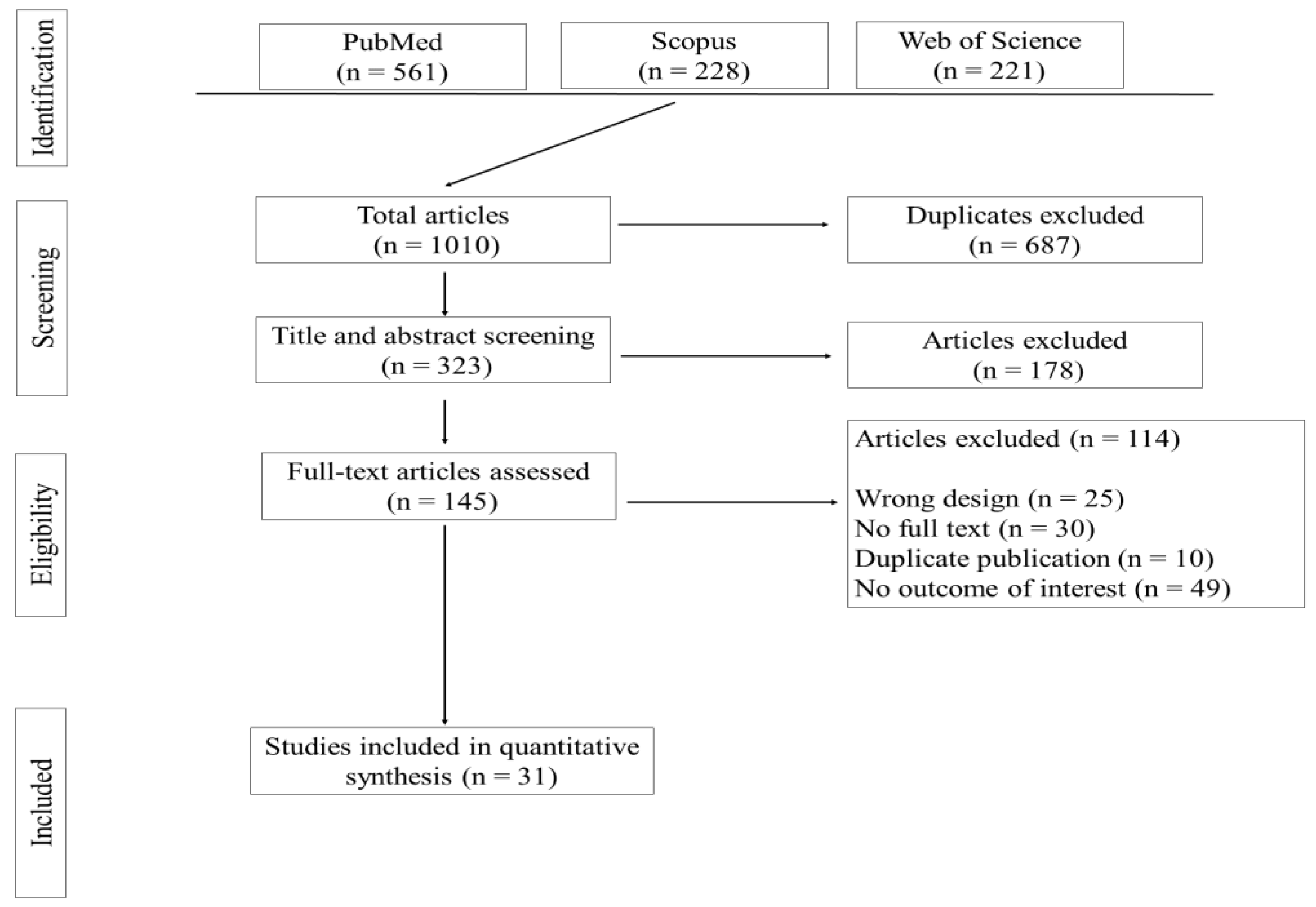
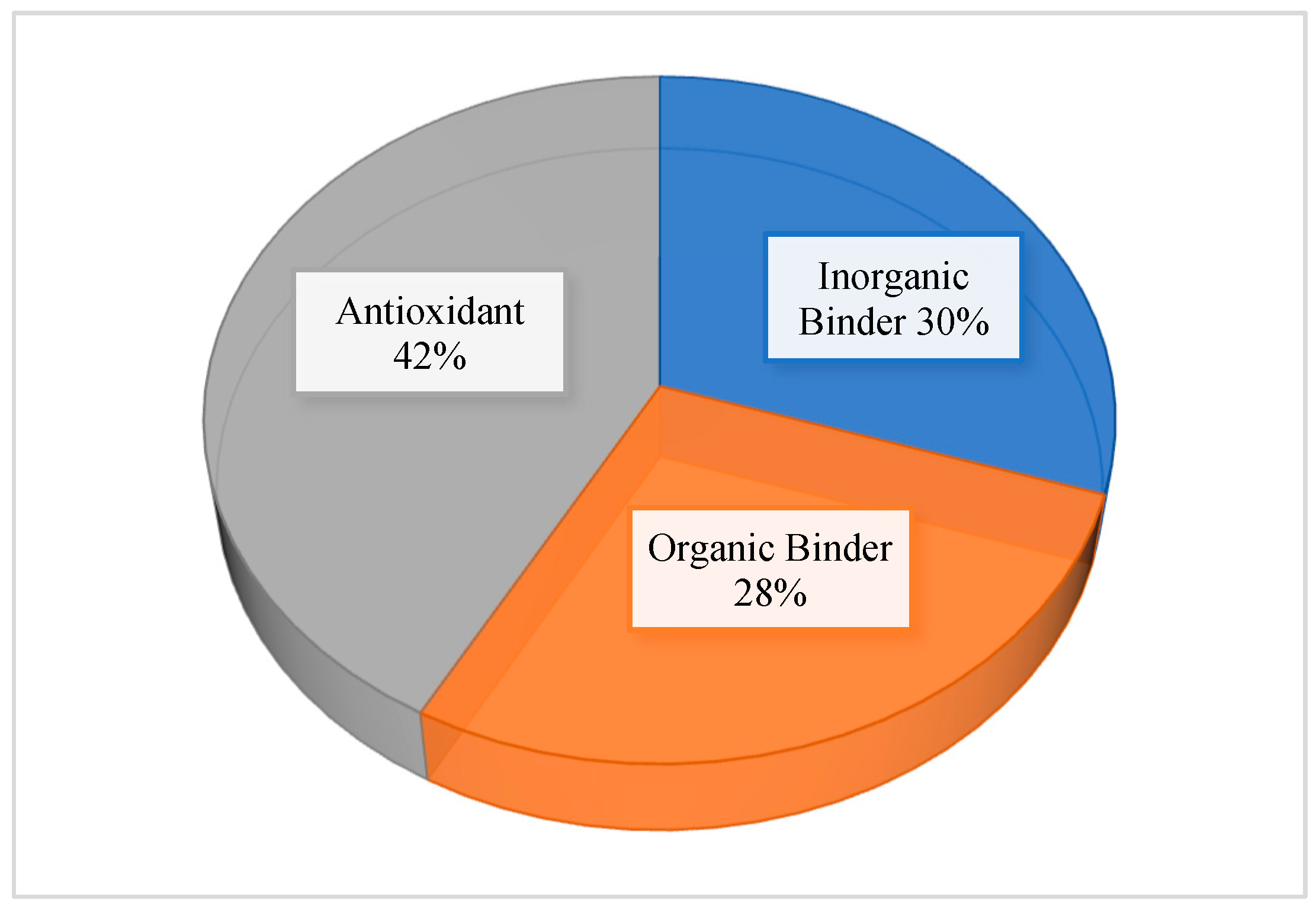

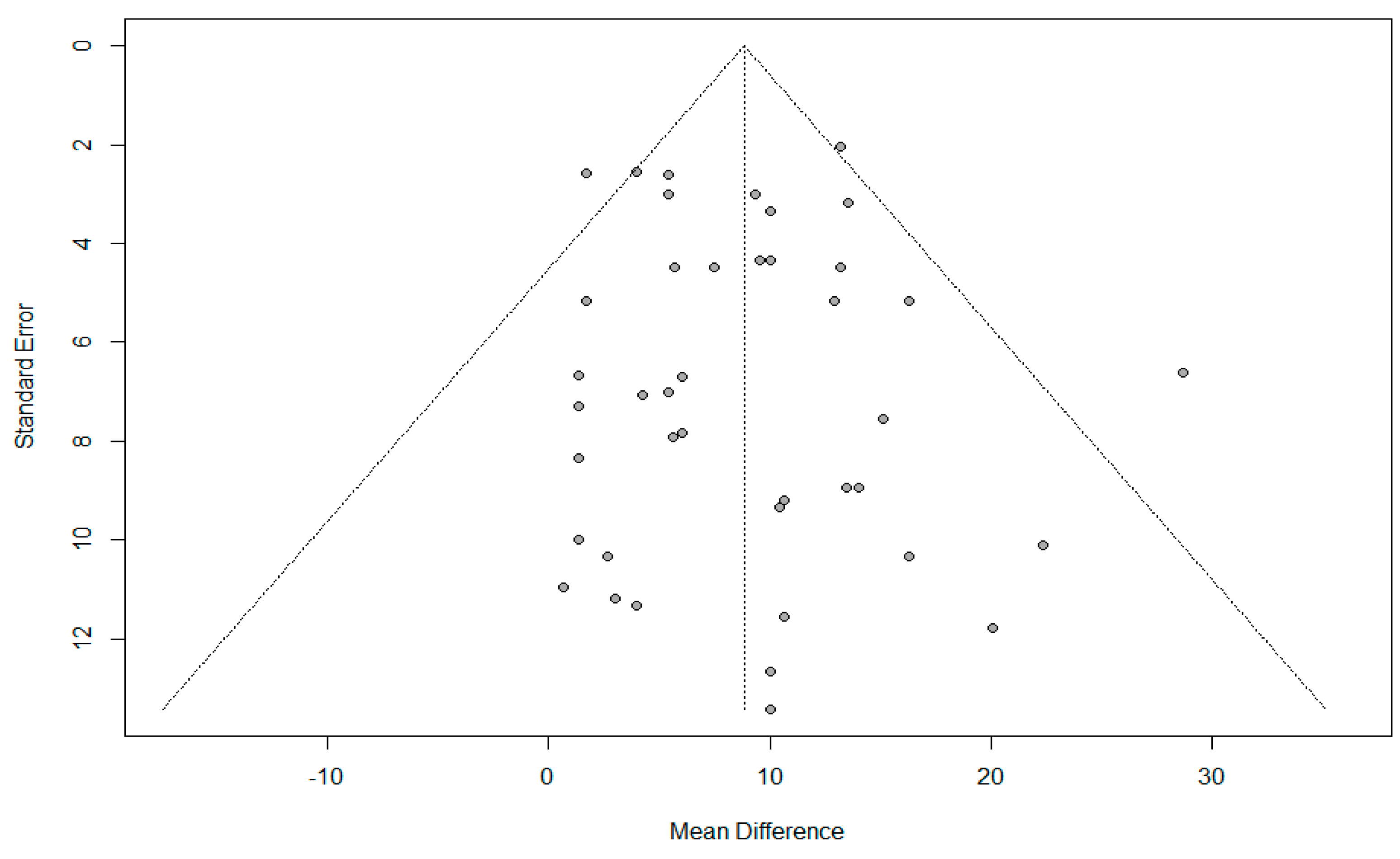

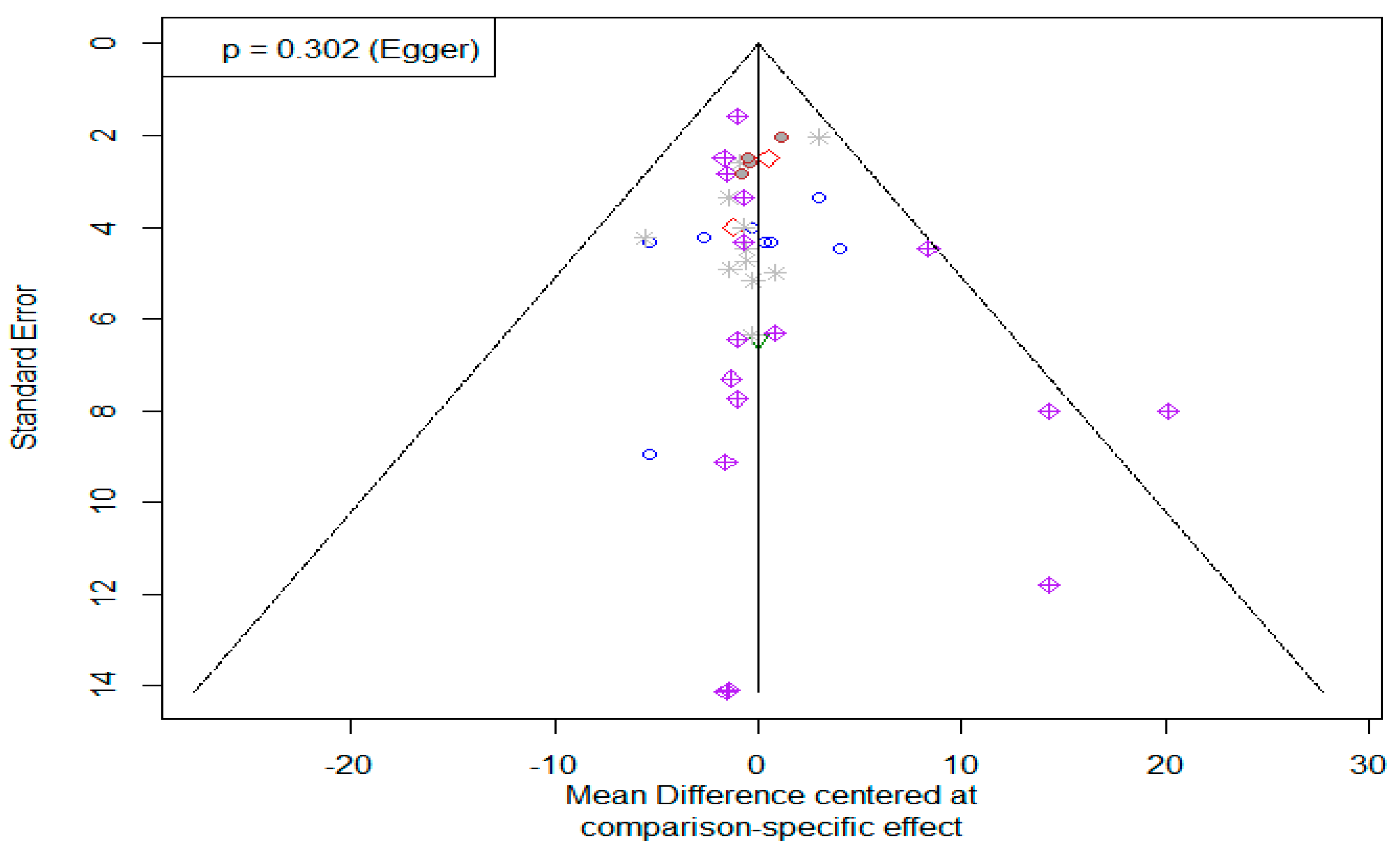
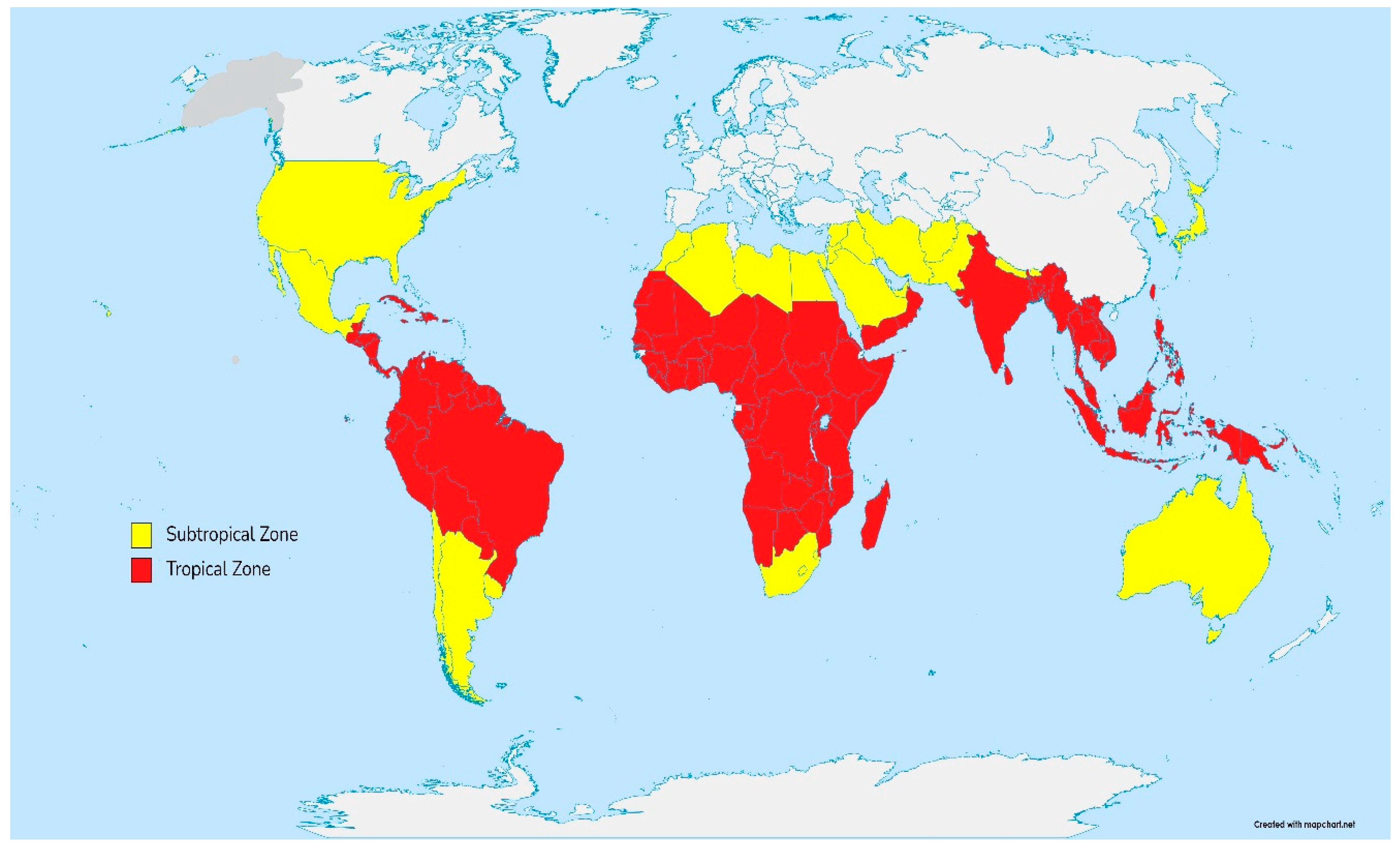
| Reference | Country | Breed | Duration (Days) | Feed Additive | |||
|---|---|---|---|---|---|---|---|
| Type | Inclusion Level | Category | |||||
| [19] | China | Broiler | 21 | Total flavonoids of Rhizoma Drynariae | 125 mg/kg | Antioxidant | |
| [20] | Iran | Broiler (Cobb 500) | 35 | L-Threonine | 125% of the requirement | Antioxidant | |
| [21] | China | Cobb broilers | 28 | Penthorum chinense Pursh extract | 3 g/kg | Antioxidant | |
| [22] | Iran | Ross broiler | 42 | Berberine | 600 mg/kg | Antioxidant | |
| [23] | Iran | Broiler (Ross 308) | 42 | Licorice extract | 6 g/kg | Antioxidant | |
| [24] | Iraq | Broiler (Ross 308) | 35 | Grape seed extract | 200 mg/kg | Antioxidant | |
| [25] | Mexico | Broiler | 21 | Curcumin | 0.20% | Antioxidant | |
| [26] | Pakistan | Broiler | 42 | Chlorella pyrenoidosa ethanolic extract | 500 mg/kg | Antioxidant | |
| [27] | Iraq | Broiler (Ross 308) | 35 | Levamisole | 0.2 mL/kg | Antioxidant | |
| [27] | Iraq | Broiler (Ross 308) | 35 | Vitamin E + Selenium | 0.5 mL/L | Antioxidant | |
| [28] | China | Cobb broiler | 28 | Grape seed proanthocyanidin extract | 500 mg/kg | Antioxidant | |
| [29] | China | Male arbor acre broiler | 44 | Sporoderm-broken spores of Ganoderma lucidum | 200 mg/kg | Antioxidant | |
| [30] | India | Male broiler | 35 | Carvacrol | 1.00% | Antioxidant | |
| [8] | China | Avian male broilers | 35 | Astaxanthin | 10 mg/kg | Antioxidant | |
| [31] | Iran | Broiler chicks (Ross 308) | 42 | Essential oil | 500 mg/kg | Antioxidant | |
| [32] | India | Broiler | 42 | Resveratrol | 1.00% | Antioxidant | |
| [33] | Pakistan | Broiler | 35 | Milk thistle | 10 g/kg | Antioxidant | |
| [34] | Thailand | Arbor acre broiler | 42 | Essential oil | 0.50% | Antioxidant | |
| [10] | Iran | Broiler chickens (Ross 308) | 42 | Saccharomyces cerevisiae | 0.05% | Organic binder | |
| [35] | Nigeria | Arbor acre broiler | 30 | Saccharomyces cerevisiae | 2 g/kg | Organic binder | |
| [36] | Mexico | Male broiler (Ross 308) | 21 | Yeast cell wall from Saccharomyces cerevisiae | 0.05% | Organic binder | |
| [23] | Iran | Broiler (Ross 308) | 42 | Saccharomyces cerevisiae | 0.5 g/kg | Organic binder | |
| [25] | Mexico | Broiler | 21 | Cellulosic polymer | 0.30% | Organic binder | |
| [37] | Egypt | Broiler | 42 | Saccharomyces cerevisiae | 1 kg/ton | Organic binder | |
| [7] | Iran | Broiler chicks (Cobb 500) | 42 | Bacillus Subtilis JQ618 strains | 1 kg/ton | Organic binder | |
| [7] | Iran | Broiler chicks (Cobb 500) | 42 | Saccharomyces cerevisiae’s cell wall | 1 kg/ton | Organic binder | |
| [8] | China | Avian male broilers | 35 | Esterified glucomannan | 5 g/kg | Organic binder | |
| [38] | Egypt | Broiler chicks (Ross 308) | 28 | Yeast cell wall | 1% | Organic binder | |
| [39] | Turkey | Broiler | 21 | Esterified glucomannan | 1 g/kg | Organic binder | |
| [40] | USA | Broiler | 30 | Saccharomyces cerevisiae | 0.10% | Organic binder | |
| [4] | China | Arbor Acres broilers | 42 | Smectite clay | 2.5 kg/ton | Inorganic binder | |
| [5] | Iran | Broiler chickens (Ross 308) | 42 | Aluminosilicate | 2.5 g/kg | Inorganic binder | |
| [41] | Egypt | Male Japanese quail chicks | 42 | Bentonite | 1% | Inorganic binder | |
| [41] | Egypt | Japanese quail chicks | 42 | Bentonite | 1% | Inorganic binder | |
| [23] | Iran | Broiler chickens (Ross 308) | 42 | Biochar | 5 g/kg | Inorganic binder | |
| [42] | Bulgaria | Toulouse geese | 42 | Aluminosilicate | 0.5 g/kg | Inorganic binder | |
| [24] | Iraq | Broiler (Ross 308) | 35 | Aluminosilicate | 100 mg/kg | Inorganic binder | |
| [7] | Iran | Broiler (Cobb 500) | 42 | Aluminosilicate | 1 kg/ton | Inorganic binder | |
| [7] | Iran | Broiler (Cobb 500) | 42 | Hydrated Sodium Calcium Aluminosilicate | 15 kg/ton | Inorganic binder | |
| [43] | Greece | Broiler (Ross 308) | 42 | Bentonite | 1% | Inorganic binder | |
| [43] | Greece | Broiler (Ross 308) | 42 | Bentonite | 1% | Inorganic binder | |
| [43] | Greece | Broiler (Ross 308) | 42 | Bentonite | 1% | Inorganic binder | |
| [33] | Pakistan | Broiler | 35 | Aluminosilicate | 3 g/kg | Inorganic binder | |
Publisher’s Note: MDPI stays neutral with regard to jurisdictional claims in published maps and institutional affiliations. |
© 2022 by the authors. Licensee MDPI, Basel, Switzerland. This article is an open access article distributed under the terms and conditions of the Creative Commons Attribution (CC BY) license (https://creativecommons.org/licenses/by/4.0/).
Share and Cite
Kolawole, O.; Siri-Anusornsak, W.; Petchkongkaw, A.; Meneely, J.; Elliott, C. The Efficacy of Additives for the Mitigation of Aflatoxins in Animal Feed: A Systematic Review and Network Meta-Analysis. Toxins 2022, 14, 707. https://doi.org/10.3390/toxins14100707
Kolawole O, Siri-Anusornsak W, Petchkongkaw A, Meneely J, Elliott C. The Efficacy of Additives for the Mitigation of Aflatoxins in Animal Feed: A Systematic Review and Network Meta-Analysis. Toxins. 2022; 14(10):707. https://doi.org/10.3390/toxins14100707
Chicago/Turabian StyleKolawole, Oluwatobi, Wipada Siri-Anusornsak, Awanwee Petchkongkaw, Julie Meneely, and Christopher Elliott. 2022. "The Efficacy of Additives for the Mitigation of Aflatoxins in Animal Feed: A Systematic Review and Network Meta-Analysis" Toxins 14, no. 10: 707. https://doi.org/10.3390/toxins14100707
APA StyleKolawole, O., Siri-Anusornsak, W., Petchkongkaw, A., Meneely, J., & Elliott, C. (2022). The Efficacy of Additives for the Mitigation of Aflatoxins in Animal Feed: A Systematic Review and Network Meta-Analysis. Toxins, 14(10), 707. https://doi.org/10.3390/toxins14100707





